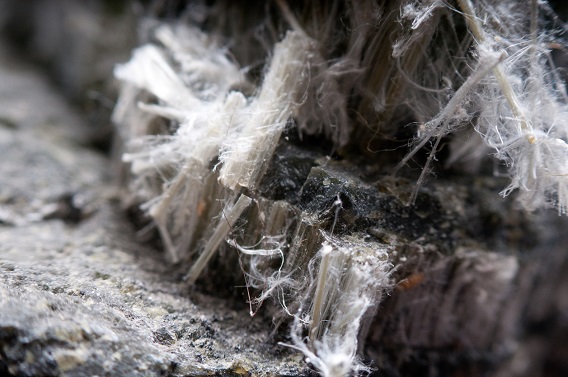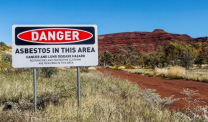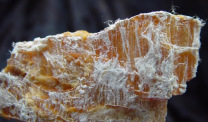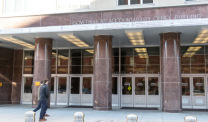ADAO Webinar Recap: Firefighting and Legacy Asbestos
Asbestos Exposure & BansWritten by Travis Rodgers | Edited By Amy Edel
Asbestos.com is the nation’s most trusted mesothelioma resource
The Mesothelioma Center at Asbestos.com has provided patients and their loved ones the most updated and reliable information on mesothelioma and asbestos exposure since 2006.
Our team of Patient Advocates includes a medical doctor, a registered nurse, health services administrators, veterans, VA-accredited Claims Agents, an oncology patient navigator and hospice care expert. Their combined expertise means we help any mesothelioma patient or loved one through every step of their cancer journey.
More than 30 contributors, including mesothelioma doctors, survivors, health care professionals and other experts, have peer-reviewed our website and written unique research-driven articles to ensure you get the highest-quality medical and health information.
About The Mesothelioma Center at Asbestos.com
- Assisting mesothelioma patients and their loved ones since 2006.
- Helps more than 50% of mesothelioma patients diagnosed annually in the U.S.
- A+ rating from the Better Business Bureau.
- 5-star reviewed mesothelioma and support organization.
Testimonials
My family has only the highest compliment for the assistance and support that we received from The Mesothelioma Center. This is a staff of compassionate and knowledgeable individuals who respect what your family is experiencing and who go the extra mile to make an unfortunate diagnosis less stressful. Information and assistance were provided by The Mesothelioma Center at no cost to our family.LashawnMesothelioma patient’s daughter
How to Cite Asbestos.com’s Article
APA
Asbestos.com. (2024, May 3). ADAO Webinar Recap: Firefighting and Legacy Asbestos. Retrieved May 16, 2024, from https://www.asbestos.com/news/2024/05/03/adao-webinar-recap-legacy-asbestos/
MLA
"ADAO Webinar Recap: Firefighting and Legacy Asbestos." Asbestos.com, 3 May 2024, https://www.asbestos.com/news/2024/05/03/adao-webinar-recap-legacy-asbestos/.
Chicago
Asbestos.com. "ADAO Webinar Recap: Firefighting and Legacy Asbestos." Last modified May 3, 2024. https://www.asbestos.com/news/2024/05/03/adao-webinar-recap-legacy-asbestos/.

The Asbestos Disease Awareness Organization held a webinar this week highlighting the need for a total asbestos ban and the dangers of legacy asbestos, which is found in older buildings, schools and homes. ADAO Co-Founder Linda Reinstein led the webinar and introduced the panelists of experts.
Dr. Raja Flores, Dr. Dan Whu and Greg Russell with the International Association of Fire Fighters, Brent Kynoch from the Environmental Information Association, ADAO counsel Bob Sussman and Reinstein discussed the need to combat misinformation and raise awareness about the presence of asbestos. They noted many people may not be aware that some asbestos products are still in use in the U.S.
In 2022 there were 224 metric tons of raw, unmanufactured asbestos imported into the U.S. for consumption. Raw asbestos is primarily used today in the chloralkali industry, which produces chlorine.
As of 2020 there were also imports into the country of asbestos products including brake blocks for the oil industry and rubber sheets for gaskets for titanium dioxide production. Some vehicle friction products and gaskets for the exhaust system of a type of utility vehicle were also imported.
The Biden administration finalized a ban of chrysotile asbestos in March 2024. But the new ban doesn’t apply to all types of asbestos.
As panelist Greg Russell said, “We have limited regulations, but that only deals with one type of asbestos and 6 conditions of use. What we need is a complete and total ban on all fibers – all 6 fibers – and all uses.”
They also explained that legacy asbestos can be present in cement, insulation, tiles, roofing materials and in other sections of structures built before 1980. Legacy asbestos can pose a threat to construction workers doing renovations, demolition crews when old buildings are demolished, people living and working in older structures, students in older schools and firefighters when older structures catch fire.
Legacy Asbestos Is a Health Threat for Firefighters
Dr. Dan Whu is the Chief Medical Officer for the International Association of Fire Fighters and believes the danger of legacy asbestos is largely ignored and is especially dangerous for firefighters. While occupational asbestos exposure typically happens a little at a time over many years, firefighters experience quick and intense exposure as fires quickly spread asbestos fibers.
“Legacy asbestos alone remains a clear and present threat to the health and safety of firefighters,” Dr. Whu said. “It’s a widely accepted occupational hazard for us.”
He explained, “We know that fire liberates asbestos and adds a tremendous amount of asbestos fibers to the atmosphere. Given what we know today it baffles me that asbestos isn’t public enemy number one.”
Firefighters inhale microscopic asbestos fibers and these fibers can also get caught on equipment or clothing. If firefighters bring home clothing or any gear with asbestos on it, their families can be exposed to asbestos in what’s called secondary exposure.
Treating Firefighters Exposed to Legacy Asbestos
Dr. Raja Flores is a thoracic surgeon and chairman of the department of thoracic surgery at Mount Sinai Hospital. He described treating firefighters with asbestos-related diseases over the years.
Firefighters are at high risk of cancer according to the World Health Organization. Working with patients diagnosed with mesothelioma and other asbestos-related cancers, he says he’s seen both the physical and emotional toll of legacy asbestos.
“When they come in, I see them short of breath, they’ve lost 40 pounds and they’re not feeling good,” Dr. Flores shared. “Many times when their family leaves the room and it’s just me and them one-on-one, they break down crying. It breaks your heart when you see these courageous men crying because not just the physical thing but the emotional toll.”
He said first responders are “some of the strongest, not just physically but emotionally and spiritually human beings that we have.” But coping with a mesothelioma diagnosis or other cancer is stressful.
Dr. Flores emphasized asbestos-related cancers were preventable had the dangers been better communicated to the public, proper precautions taken and a ban been enacted. “That’s the hardest thing,” he said.
Dr. Flores also worked with hundreds of first responders who were diagnosed with mesothelioma and other cancers from Ground Zero. The 9/11 attack is a tragic example of how legacy asbestos can become dangerous. People near Ground Zero during and after the attack, as well as those exposed to the cloud of dust that blew across New York City were exposed to asbestos fibers.
Supporting the Alan Reinstein Ban Asbestos Now Act
Greg Russell with the International Association of Fire Fighters said the recent chrysotile ban the Biden-Harris administration finalized is a step in the right direction. However, he feels something stronger and more enduring is necessary.
What we do today will protect people in the future,” Russell said. “Regulations are not the answer because it’s easy to change. It’s easy to create loopholes. There are so many regulations out there that they often fly under the radar. Also when you have a change of administration it’s easy for them to reset the agenda and change that regulation.”
Russell advocates for the passage of the Alan Reinstein Ban Asbestos Now Act. Dr. Flores also endorses the passage of this proposed ban. The measure, named in honor of ADAO Co-Founder Linda Reinstein’s husband, would amend the federal Toxic Substances Control Act. It would prohibit the use and importation of all types of asbestos.
“We want to prevent the people 20 and 30 years from now – the people who’ll be saving our kids’ lives – we want to prevent those firefighters from getting affected now,” Dr. Flores said. “Because it’s the exposure now that’s going to kill them decades from now.”
He added, “Most people believe that asbestos is banned and that it’s illegal. So there is misinformation out there that needs to be corrected and needs to be disseminated.”
As asbestos ages it can begin breaking down, especially if it’s disturbed. When it crumbles, it can become airborne and easily inhaled or ingested.
DIY home projects can also be dangerous when disturbing asbestos in homes, schools or buildings. If you find asbestos, hiring an asbestos abatement is the safest approach to asbestos removal.







